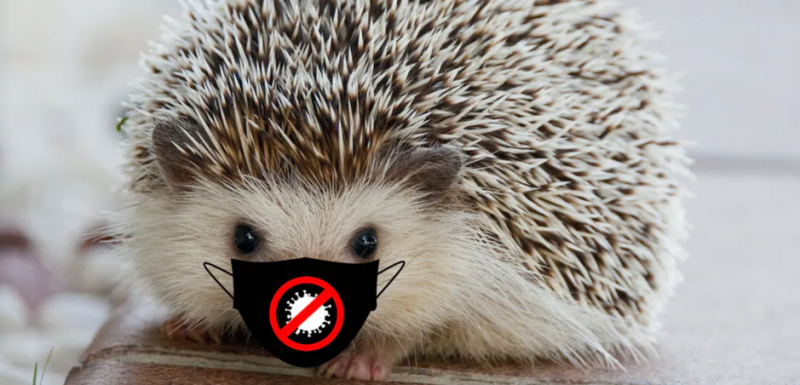Since the start of the pandemic we have not stopped receiving news about different mental disorders linked to it.
First, we discover the syndrome of cabin fever, that push to stay locked up. With the widespread use of the mask, and by “preventing” us from expressing our feelings, the “blank face” appeared.
Following the recommendation on maintaining social distance, it was the turn of the “hunger for skin” syndrome. We needed to regain the human touch.
Now, we have come across haphephobia, the fear of touching or being touched for fear of contagion.
The truth is that, to date, there are no conclusive studies on any of these alleged syndromes. Nor on the latter, which already existed before the pandemic and whose prevalence is very low.
What there is, obviously, is an increase in various ailments: fear, sadness, uncertainty, anguish, anger … Also new habits of social distance and isolation linked to the health crisis.
Why, then, this insistence on naming as disorders what are no more than discomforts typical of a traumatic event such as the one at hand?
Surely, because names limit fear and provide meaning where either there is none or it is insufficient. That is the power of categories (including diagnostic ones): explaining the present, redefining the past and anticipating the future.
Schopenhauer and the Hedgehogs
Having ruled out the epidemic of haphephobia, we can ask ourselves about the future of this current fear of contact. Will it remain as a post-COVID sequel? Will it change our modes of approach? Will it cancel the habit of giving hugs and kisses when we meet or say goodbye?
In 1851 and on the subject of obstacles in social ties, Schopenhauer wrote The Hedgehog’s Dilemma or The Parable of the Chilled Porcupines. It goes as follows:
“On a harsh winter’s day, the porcupines in a herd huddled against each other to warm each other. In doing so, they wounded each other with their spikes and had to separate. Forced again by the cold, they pricked each other again and distanced themselves. These alternatives of approach and distance lasted until they were able to find an average distance in which both evils were mitigated.”
Freud uses this quote to show how our ties are characterized by the ambivalence between love and hate. After all, “any intimate relationship with a certain duration leaves a deposit of hostile feelings in those involved.”
Later, the psychoanalyst Jacques Lacan used the term extimacy. What this means is that the spring of this back and forth in the bond with others should not be sought outside, in them, but in our own interior.
It alludes to what is most intimate of each one of us. That which, however, is unrecognizable to us because we do not like it and we place it abroad. Like a foreign body.
Children learn “no” earlier than “yes”. They expel what they hate about themselves, what does not make them kind to the other (their screams, sadness or bad mood).
Thus, they constitute a first psychic frontier, differentiating the interior from the exterior, imputing to the other (the foreigner) what they reject. We approach and distance ourselves from others based on how we bear our own foreignness, that self-hatred. So human and so primal.
The fear of touching is a phobia of ourselves. The secret we don’t want to understand is that we are porcupines to ourselves. We pollute ourselves, although when we move away we have the illusion that the other is the polluter.
The virus from which we flee is the one that parasitizes us as fear for everything that distresses us and we cannot solve. Like those teenagers who bitterly reproach their parents for all the limitations they experience. As if they weren’t with them, instead of taking care of those impossible ones.
The love solution
How can we prevent this estrangement from becoming chronic and confining us in our hedgehog cage? No less than Coca-Cola reminded us that “there is an empathy gap and we need to address it if we want to be the brand that brings people together.” Like other companies, it proposes to make empathy the balm of our ills.
Freud recalled that “egoism does not find a limit other than in the love of others.” Also that love is the main factor of civilization, perhaps the only one, determining the passage from selfishness to altruism.
But empathy forced by marketing and love – as the reverse of narcissism – are different matters. The love that helps us is that which begins with oneself. To reconcile with that exclusion, difficulties and weaknesses of our own and of those around us.
The love that counts is not the one that finds the reflection of itself in the partner, but the one that loves what is limping in the other and makes them different and unique. We only tolerate the other to the extent that we tolerate ourselves. In order not to move away, it is advisable first to get closer to ourselves.
That is, without a doubt, the best answer to contact phobia. Connect and reconcile with the most intimate of each one.
————
Originally published : https://tinyurl.com/yxnqtn9m

